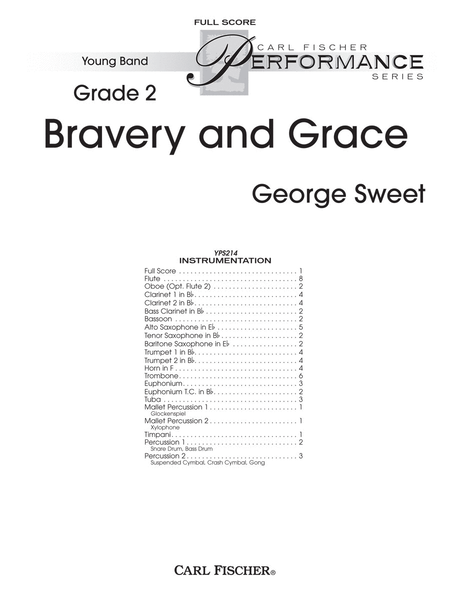Bravery and Grace
-
Ships in 1 to 2 weeks
Details
Description
SKU: CF.YPS214F
Composed by George Sweet. Young Band (YPS). Full score. With Standard notation. 16 pages. Carl Fischer Music #YPS214F. Published by Carl Fischer Music (CF.YPS214F).ISBN 9781491153017. UPC: 680160910519.
This new piece from composer George Sweet is a delightful combination of Scotland the Brave and Amazing Grace. Each tune on its own is wonderful, but in Sweet's setting, they are masterfully layered to reflect the composer's Scottish-American heritage. This presentation of a Scottish melody with Americana-inspired harmonies is a stunning example of compositional craft.
Bravery and Grace is a setting of the unofficial Scottish national anthem, Scotland the Brave. While the melody is taken from Scotland the Brave, the accompaniment and harmony both have a “Western Americana” feel, reminiscent of composers like Roy Harris and Aaron Copland. This combination of a Scottish melody with American harmony is a reflection of the composer’s Scottish-American Heritage.The piece begins with a fragment of Scotland the Brave presented in a lush and reflective context. The main theme is performed in full by the upper voices at m. 9. The middle voices perform the material at m. 17, and the lower voices perform it again at m. 33. This results in a loud passage representing pipers at m. 46. The traditional spiritual Amazing Grace appears suddenly at m. 51 in a somewhat polytonal setting. This is, once again, reminiscent of practices of the aforementioned American composers. After this lyrical presentation, a fragment of the main theme returns at m. 66. This is followed by a broad restatement of the theme at m. 70 and a brisk conclusion with a final flair of polytonality.

 Share
Share